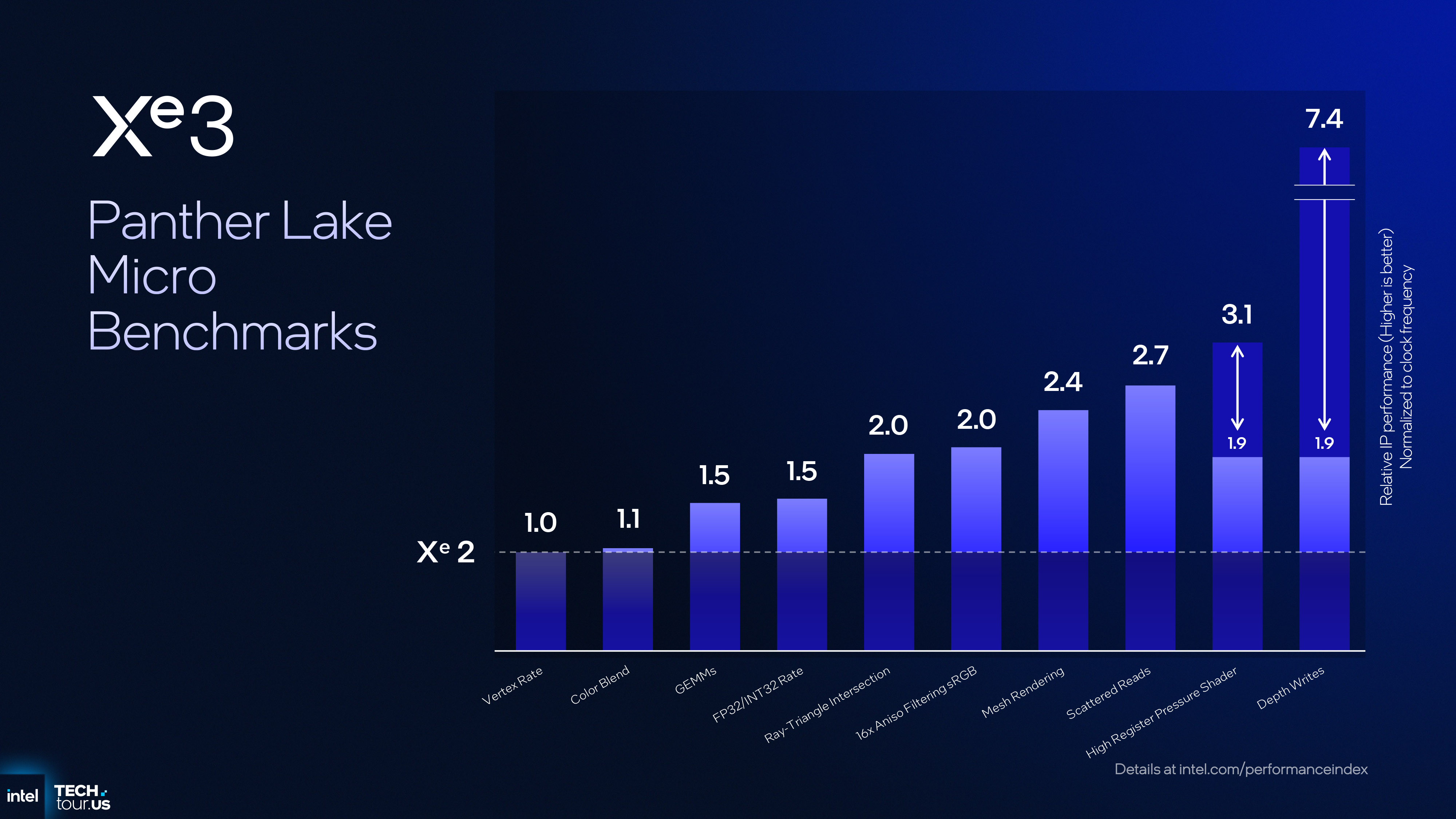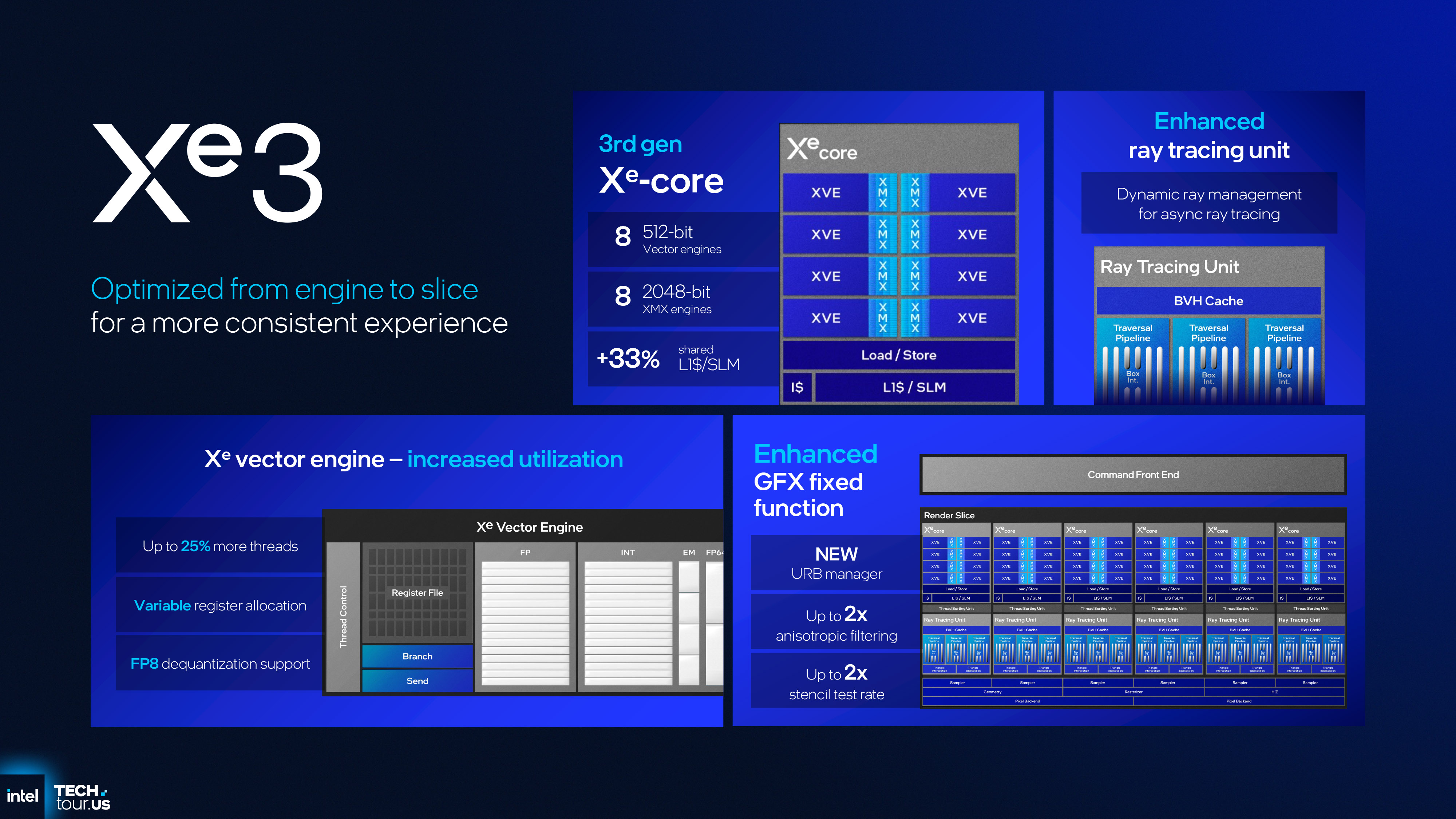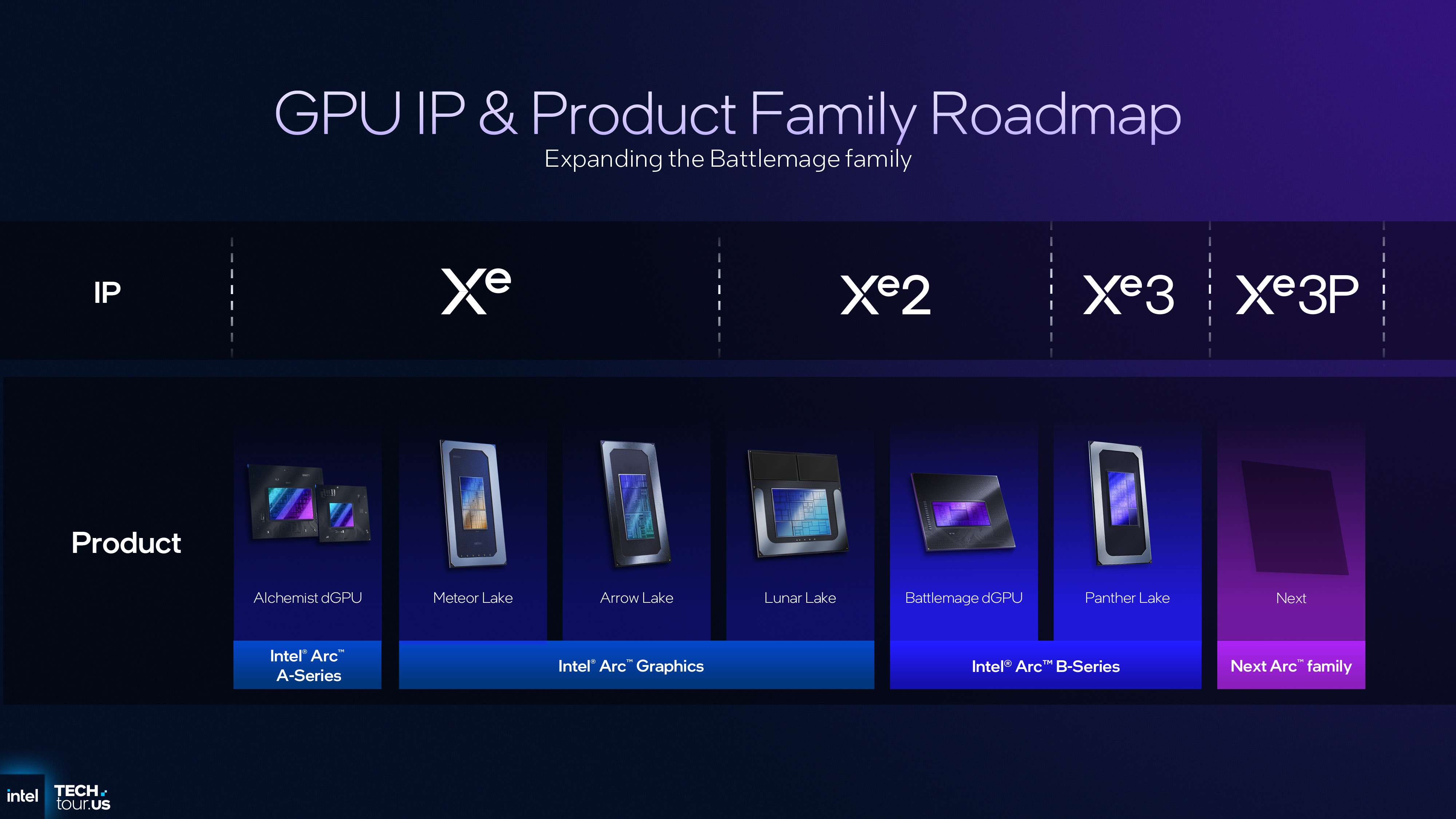It's not Celestial, but Intel's new Xe3 GPU architecture looks like it'll be ideal for the next generation of handheld gaming PCs
It's Intel's largest ever iGPU and big enough to put some basic dGPUs to shame.
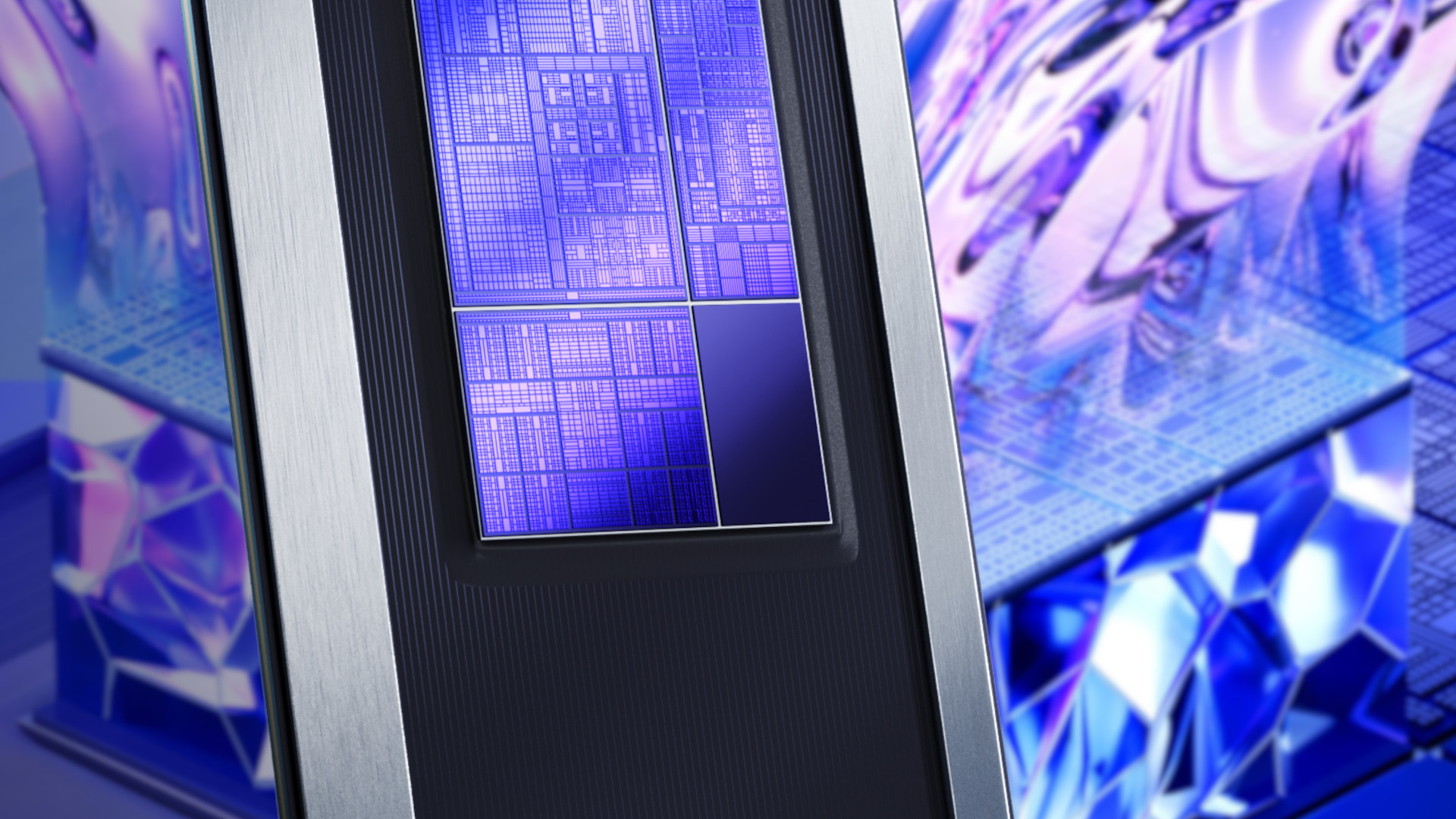
At this year's Technology Tour event, Intel gave us a detailed insight into its latest processor design, codenamed Panther Lake. Boasting a new process node to unify the best aspects of Lunar Lake and Arrow Lake, the new chip also sports an updated graphics architecture, Xe3. While it's not the Celestial graphics architecture we're hoping for in the desktop graphics card market, the beefy little iGPU should be ideal for handheld gaming.
The best way to view Xe3 is to think of it as being an all-around polish and spruce up of Xe2, but one which also lays the foundation for Intel's next generation of Arc graphics processors. This is possibly why Intel settled on using the product name of 'Arc B-series' for the new iGPU, rather than giving it an entirely new name, even though the GPU architecture itself is new.
I chatted to a few of Intel's senior staff at the Technology Tour event about the nomenclature, and nobody had any better explanation for using B-series as the name, so that's what I'm sticking with. As things currently stand, we'll see two implementations of Xe3 in Panther Lake when the processors officially launch at CES 2026.
Panther Lake's iGPUs
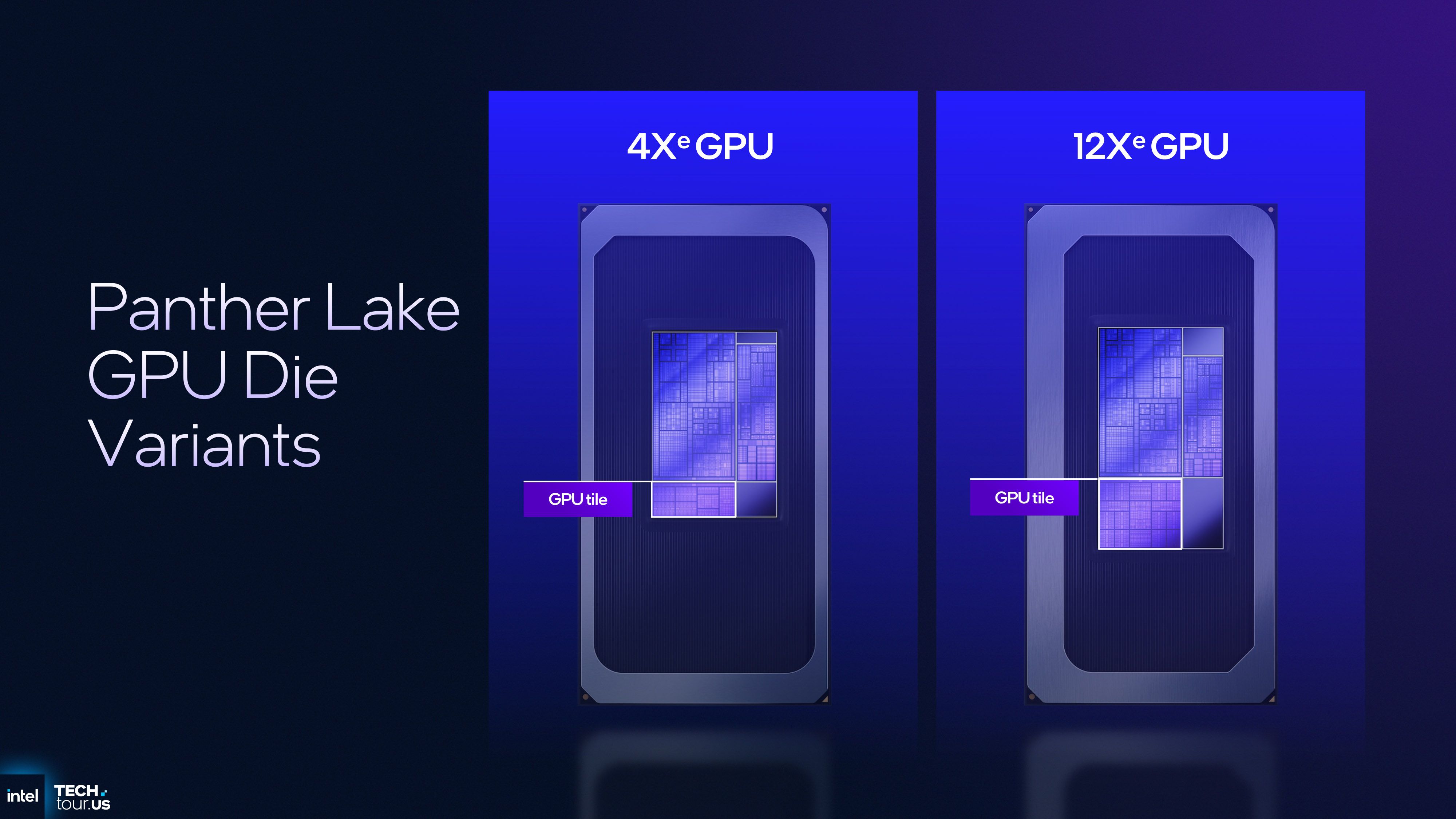
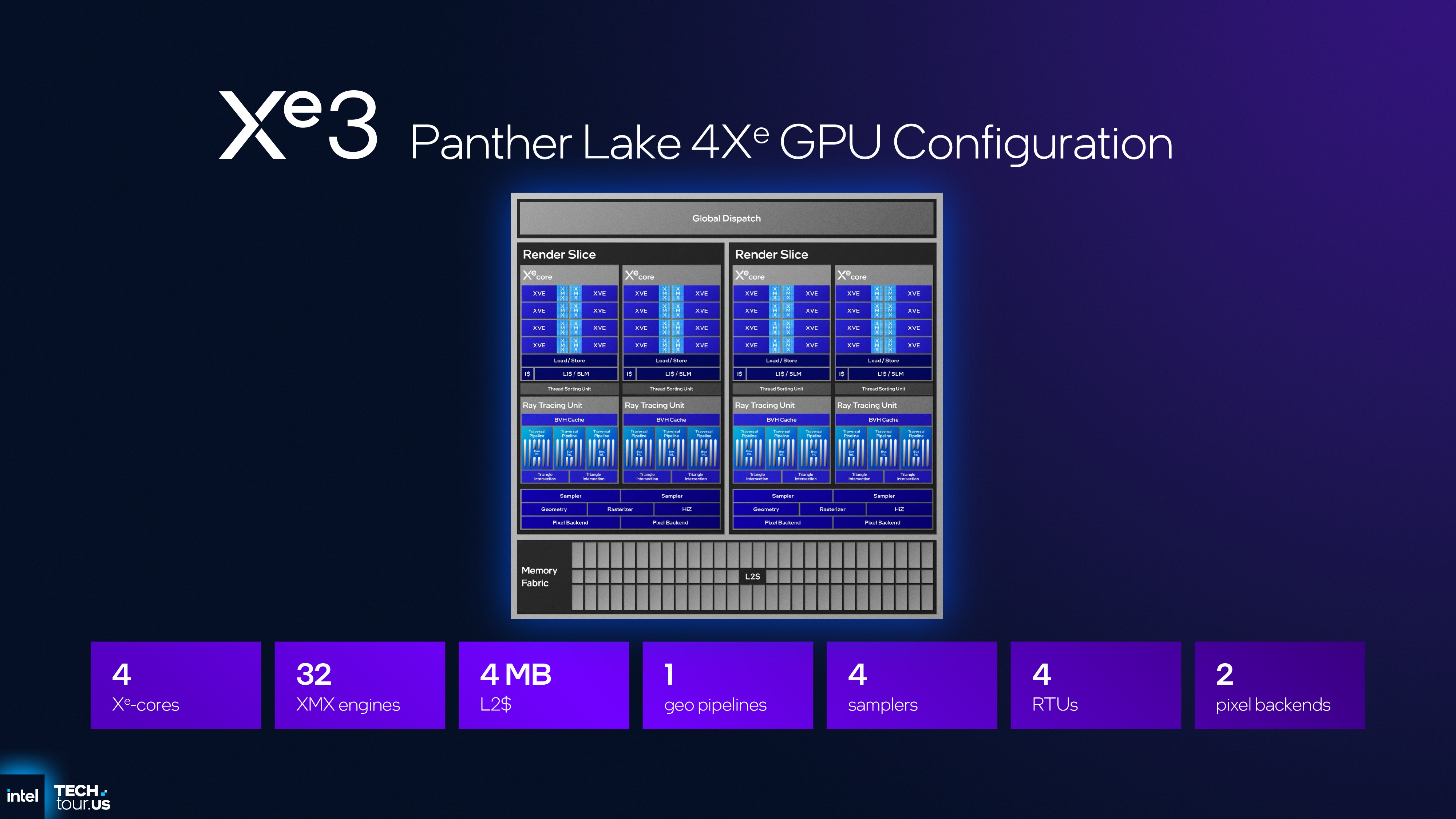
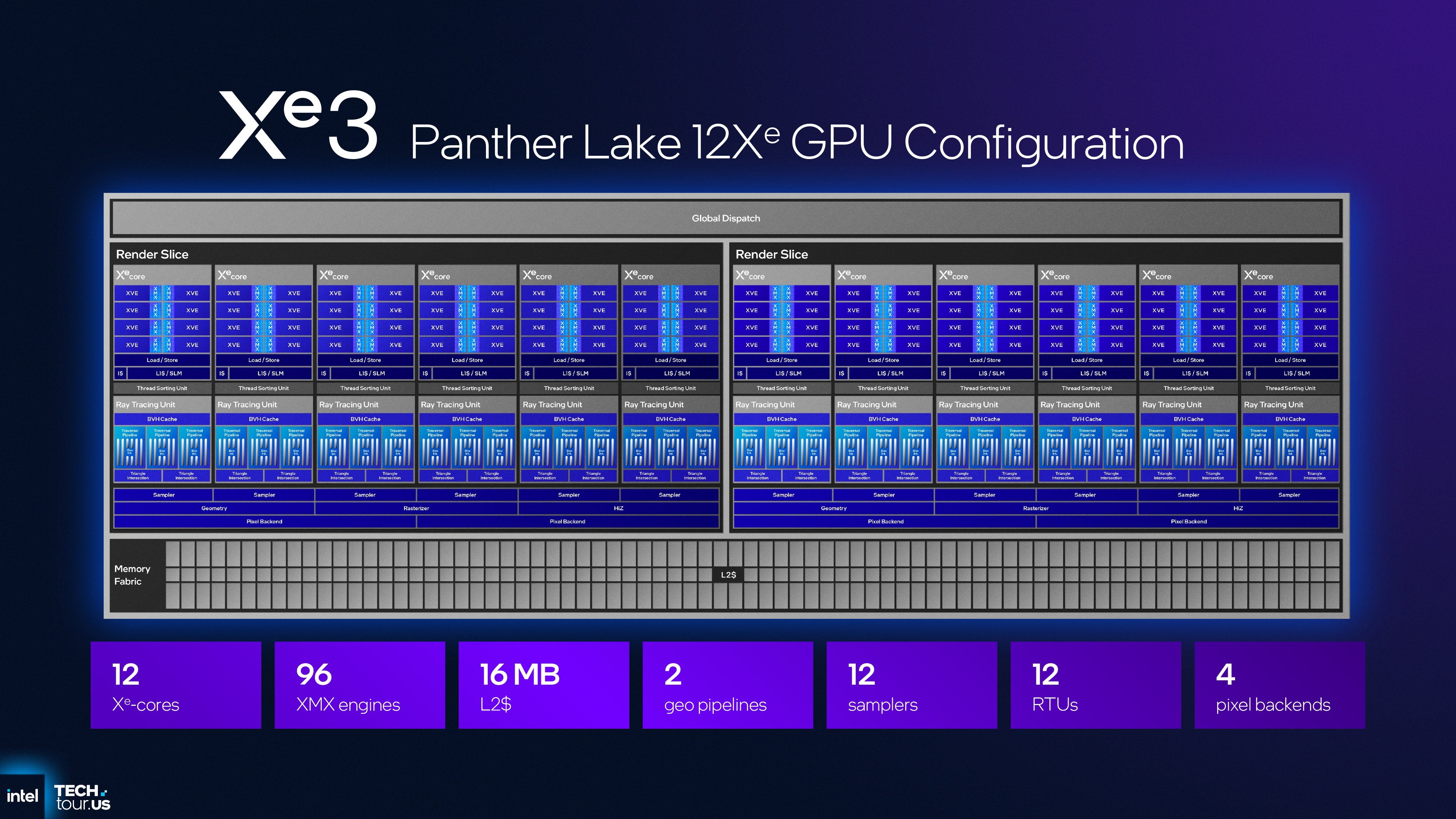
Intel's forthcoming Panther Lake processors will come in three varieties. Two will have the same integrated GPU: very small, with just four Xe3 cores and 4 MB of L2 cache, and manufactured on the Intel 3 process node. The base Panther Lake (PTL) SKU will use this configuration, as will the higher-tier SKU that's designed to be used in conjunction with a discrete GPU.
The remaining PTL SKU, however, packs a B-series iGPU that is far more interesting. Made on TSMC's N3E node, this one sports 12 Xe3 cores, making it Intel's largest ever integrated GPU. That's 50% more cores than in anything in Meteor Lake, Lunar Lake, and Arrow Lake.
Adding more cores by itself doesn't necessarily translate into better gaming performance, as the demands on the VRAM will increase. To offset this, the 12 Xe3 PTL variant supports up to 128 GB of LPDDR5x-9600, giving 13% more memory bandwidth than the fastest LNL chip.
That doesn't sound like much of an increase, but Intel has also bumped the L2 cache up to 16 MB to account for this. That's just 2 MB less than what's in the Arc B580's GPU, and considering that it has 20 Xe2 cores, that's almost 50% more cache-per-core in PTL Xe3 than in Battlemage.
Keep up to date with the most important stories and the best deals, as picked by the PC Gamer team.
Coupled with all the other changes in Xe3, this B-series variant will be the one to watch for gaming. Confirmed clock speeds are still some way off, so Intel produced a clock-for-clock performance comparison between Panther Lake's biggest iGPU to that in Lunar Lake.
As you can see, some aspects are no different, such as the speed at which triangles are processed. PTL and LNL top-tier iGPUs have the same number of geometry engines, so that's not a surprise. The same is true for the GEMM (general matrix multiplication) and FP32 rates: these are 50% higher because there are 50% more cores.
But once you look at very specific situations, things get a whole lot better. No game is performance-limited by any of these, but taken altogether, the 12 Xe3 core PTL chip is going to be much nicer to game on than any LNL processor, and since they're pretty decent to begin with, I can't wait to get my hands on a Panther Lake laptop or handheld.
Actually, I already have, albeit rather briefly. Intel had an engineering sample PTL laptop running an early version of the Painkiller reboot, and we all got to blast a few monsters to pieces. Running with a power limit of 45 W, near the top of Panther Lake's targeted power window, the laptop was getting around 45 to 50 fps natively at 1080p, and over 200 fps with quality upscaling and 4x multi-frame generation applied.
Attempts to dive into the graphics detail settings were met with a stony glare, so I had to resort to eyeballing the textures and effects. My best guess is that they were 'high' rather than maximum, but it looked good and ran very smoothly. For a handheld, 45 W is obviously too high, but PTL has been designed to scale across power levels better than LNL.
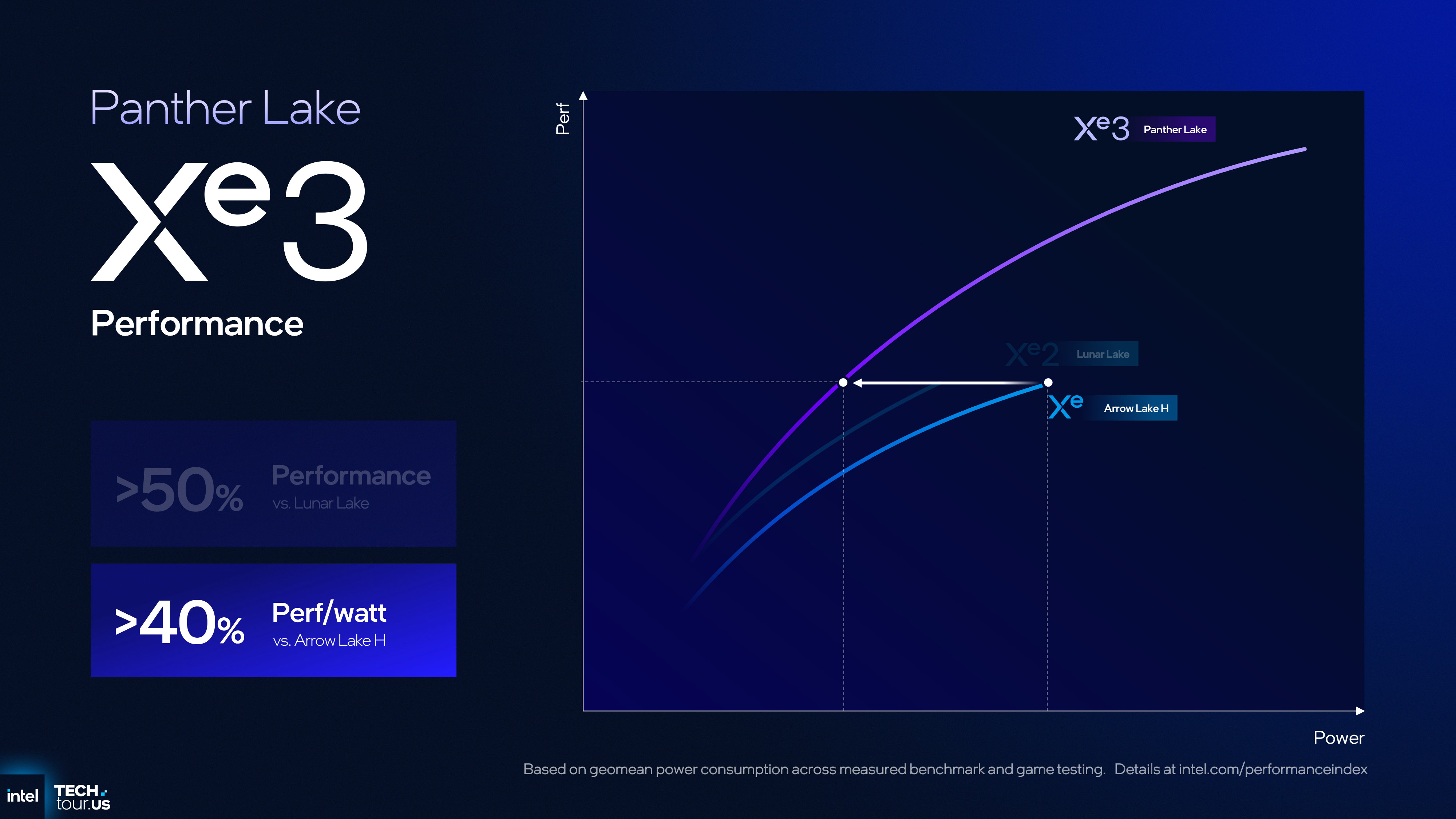
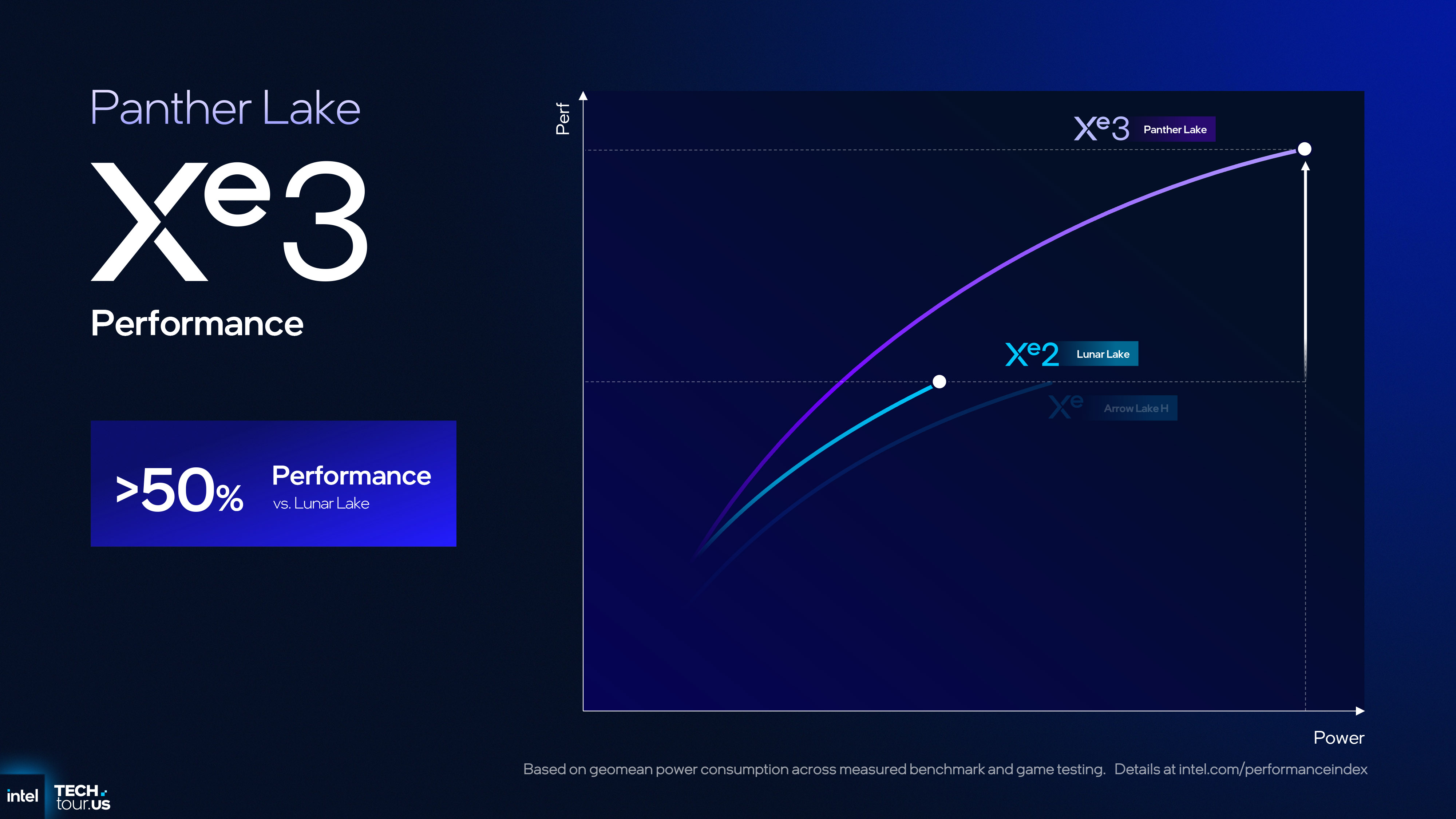
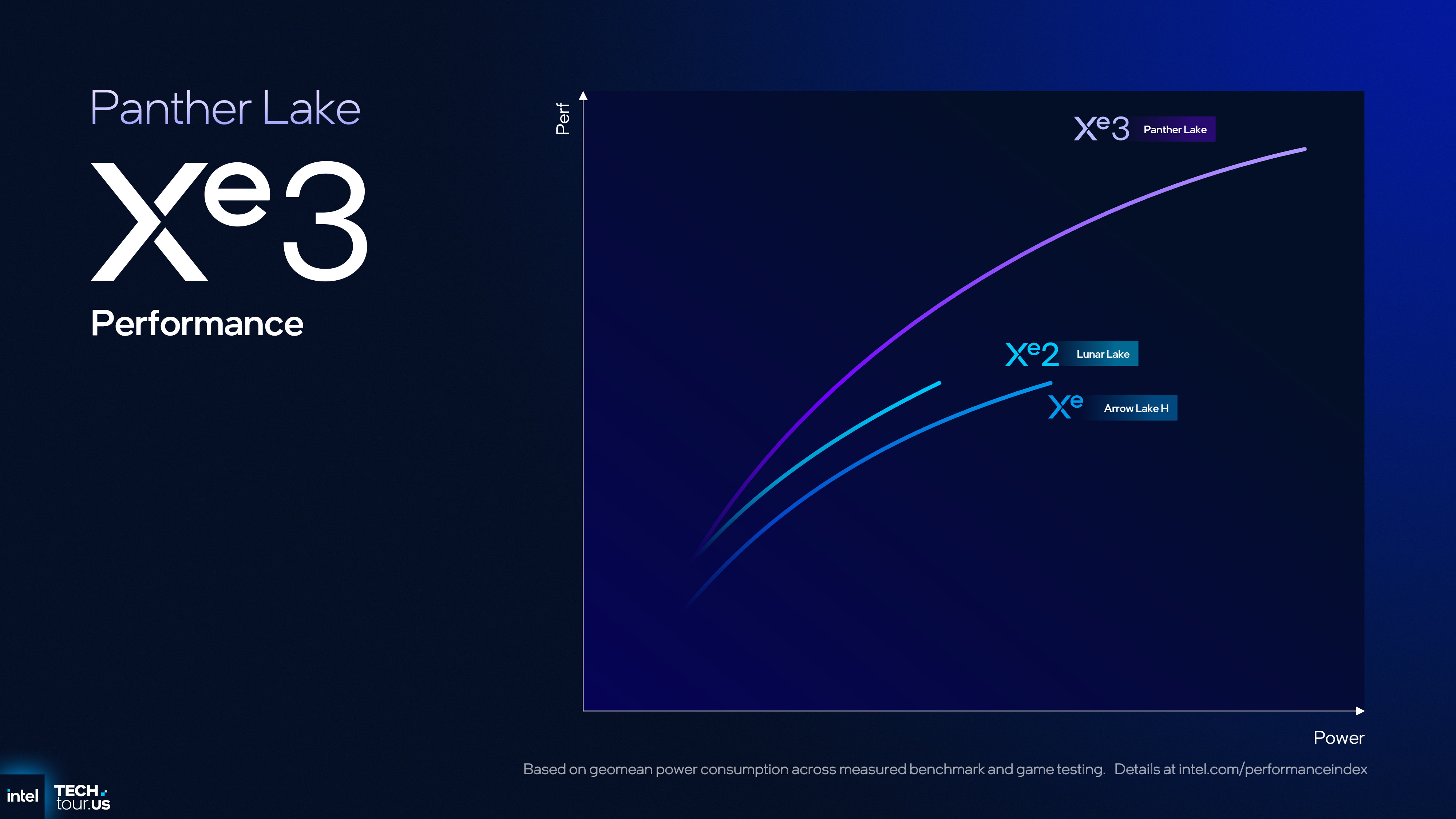
Intel's basically saying that you can either stick to Lunar Lake's power window and get better performance, or have the same performance but at a much lower power consumption. Either situation is great for ultra-thin laptop or handheld gaming, and AMD might find it has some genuine competition in these sectors.
To understand exactly why Xe3 is so much better than Xe2, though, we need to dive a little deeper into the architectural changes inside the GPU tile.
Xe3 architectural changes
Each Xe3 core comprises eight vector engines, each handling 16 threads apiece, now paired with a whopping 256 kB of L1 cache/shared memory. While that's the same as the Xe2 cores in the likes of the B580 graphics card, Lunar Lake's iGPU only has 192 kB of L1 cache per core, and that 33% increase in low-level cache will considerably help in keeping all the shader units occupied.
That's not the only thing, though. Each Xe3 core can handle up to 25% more threads than Xe2, which also helps to improve shader utilisation, along with variable register allocation. Intel didn't say too much about the latter, but apparently it's a whole new system, one that should reduce the amount of register thrashing the GPU could experience.
This is when you have a bunch of shader cores all processing threads and requesting registers to store data and instructions. However, since there is a fixed number of registers per Xe3 core, you can end up in a situation where the register demand outstrips the availability, resulting in threads being stalled while data gets popped in and out of registers (that's the 'thrashing' part).
And there's more: the unified render buffer, used to store the output from one core to be shared with others, has been tweaked so that the whole thing no longer needs to be emptied out with context changes. The cores also boast improved anisotropic filtering and stencil tests for speedier texturing and shadowing.
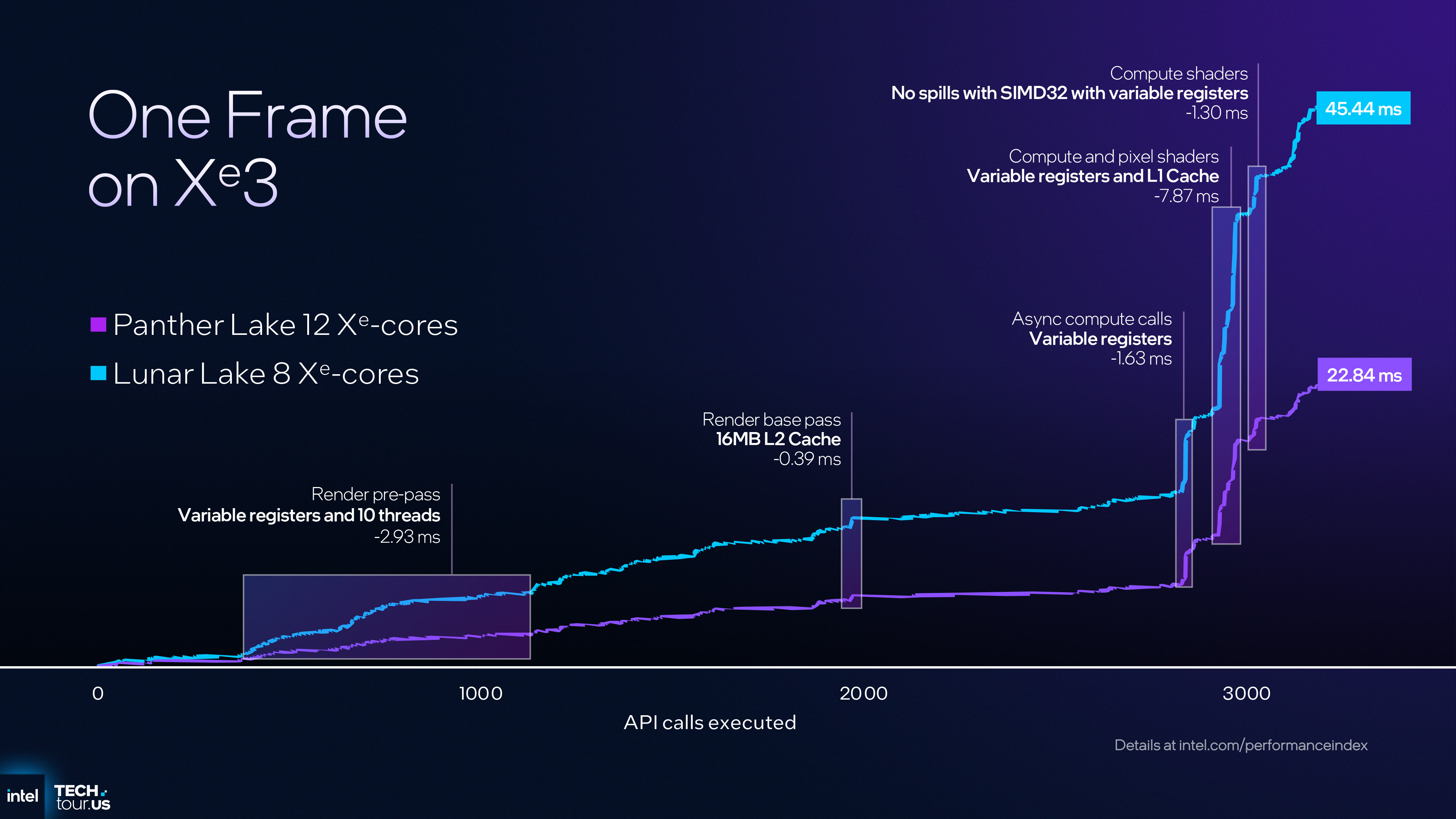
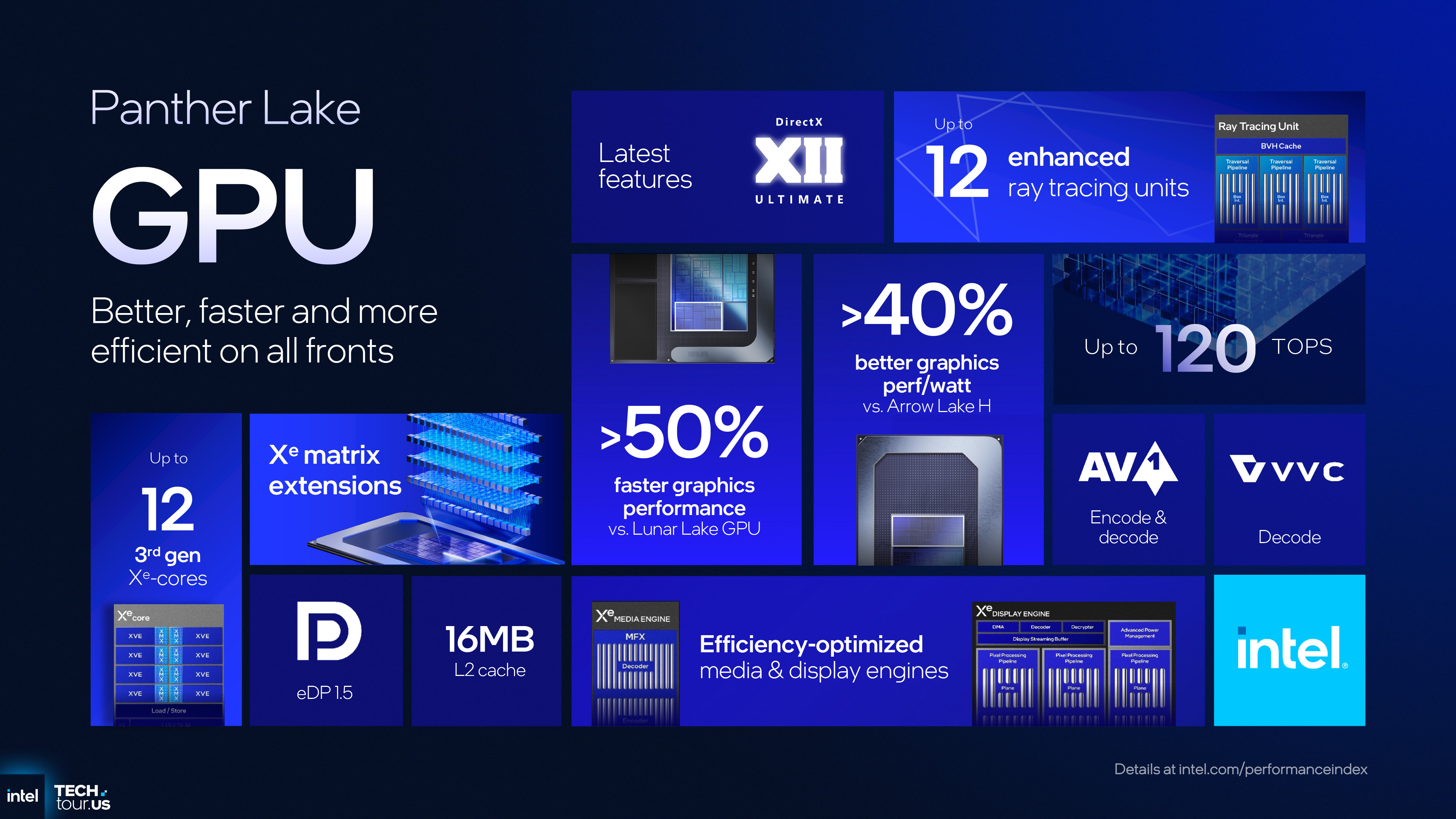
Lastly, they now support FP8 dequantization. This isn't just a smaller, lower-precision data format for increasing shader speed; it's a system that allows higher-precision data formats to be scaled to the smaller format (quantization), processed at a faster rate, and then scaled back up to the original size (dequantization). Not much use for gaming, as such, but great for AI.
As with all Arc GPU designs, each Xe3 core is matched by an individual ray tracing unit, and these have been updated, too. Inside each of these is a dispatch unit that issues threads for handling rays, and this can now run slower, to help with thread scheduling.
Threads for ray shaders are always dispatched out of order, but they have to be stuffed back into order to render things correctly, and this can create a bottleneck if some threads are taking much longer to process than others.
By dynamically adjusting the rate of dispatch at critical times (e.g. when the RT unit is already busy handling rays but you need to issue a bunch of new ones), the reordering of ray shaders now becomes more efficient—and along with the larger caches, you now have a bit more performance to play around with in ray tracing.
Celestial beckons
Many of us in PC Gamer's hardware office were hoping that Panther Lake's integrated GPU would be the same processor, albeit smaller in size, that Intel would use it for its next generation of C-series (aka Celestial) graphics cards.
However, Intel shot down that idea immediately, saying that Xe3 is just for PTL. However, it also showed us a timeline of Xe GPUs, starting with Alchemist and ending with Xe3P for 'Next Arc Family'.
This strongly suggests that Xe3 is the foundation for Celestial, because why else would you keep the same architectural nomenclature? If Celestial is going to be a massive step forward from Battlemage, you'd think Intel would use Xe4 for the name.
The obvious question to ask is what exactly will Intel change for Xe3P. It can't simply be more cores, because that doesn't require a new architecture name. When it introduced Xe2 with Lunar Lake (calling the iGPU 'Intel Arc Graphics'), Intel just made a bigger version of it for its Battlemage/B-series graphics cards, not a new architecture.
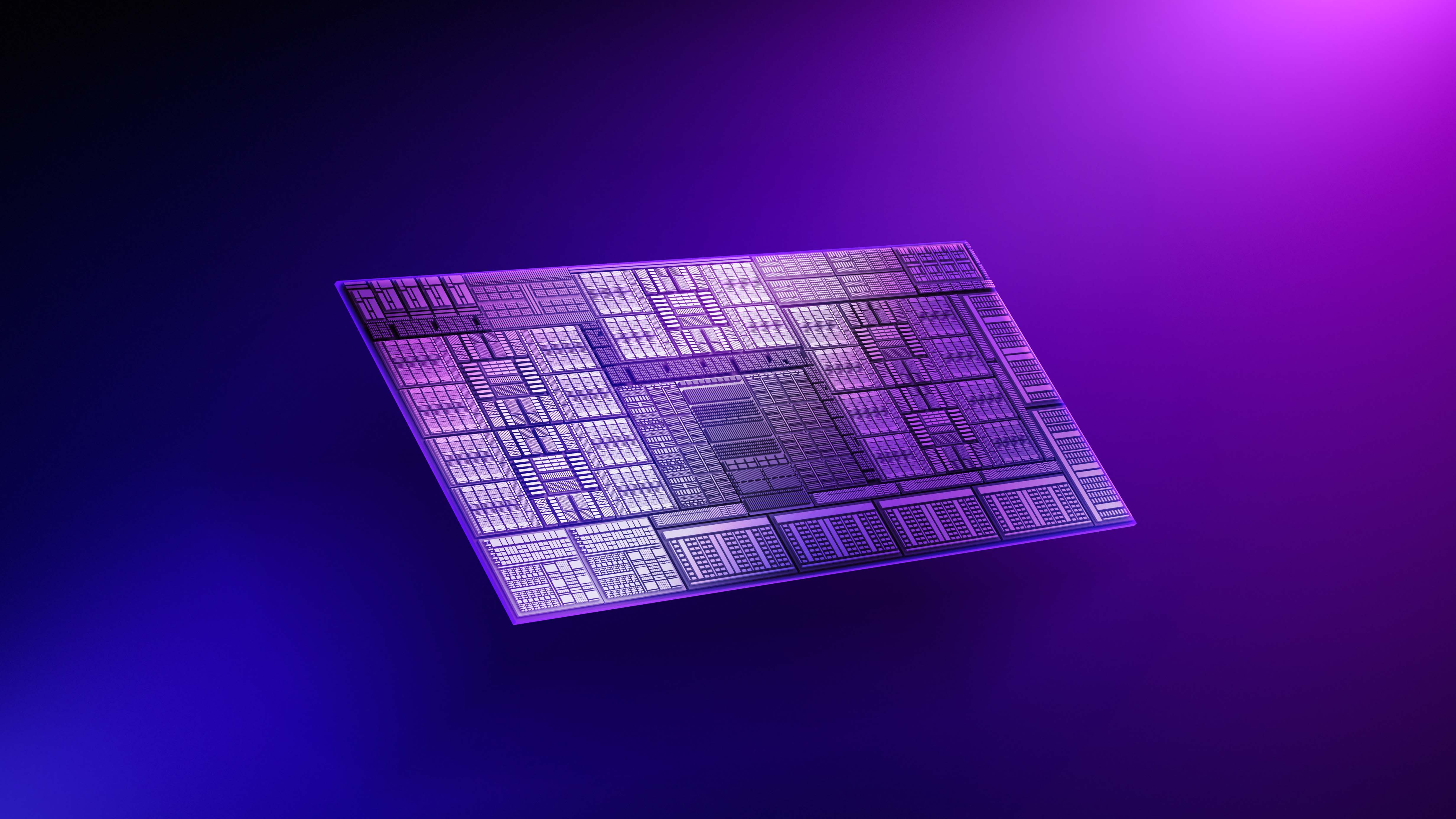
At the same time, it can't be a wholesale change of the Xe cores, either, as it's sticking with 'three' in the name. Having thought about this during my many hours of flying back from the Technology Tour, a couple of possibilities popped into my head. One is that the P involves the relevant tweaks required for the GPU to hit a clock speed of well over 3 GHz (Xe2 tops out at just under 2.7 GHz), along with even more L2 cache, a wider memory bus and super-fast DRAM to keep all the shaders happy.
The other possibility is that it's a whole host of little tweaks to the cores; nothing major, just small improvements that accumulate to improve performance enough to warrant a new architecture title, such as faster load/store units or better thread management.
Then again, nomenclature isn't a strength of Intel's, so for all we know, Xe3P could indeed be a completely new GPU design. But while we're still no wiser about Celestial, what I've read and experienced first-hand with Xe3 makes me quietly confident about its C-series graphics cards. If Intel can bring them to market quickly enough, with the right performance-per-dollar, PC gamers might have something to look forward to.
Now wouldn't that be a change?

Nick, gaming, and computers all first met in the early 1980s. After leaving university, he became a physics and IT teacher and started writing about tech in the late 1990s. That resulted in him working with MadOnion to write the help files for 3DMark and PCMark. After a short stint working at Beyond3D.com, Nick joined Futuremark (MadOnion rebranded) full-time, as editor-in-chief for its PC gaming section, YouGamers. After the site shutdown, he became an engineering and computing lecturer for many years, but missed the writing bug. Cue four years at TechSpot.com covering everything and anything to do with tech and PCs. He freely admits to being far too obsessed with GPUs and open-world grindy RPGs, but who isn't these days?
You must confirm your public display name before commenting
Please logout and then login again, you will then be prompted to enter your display name.
